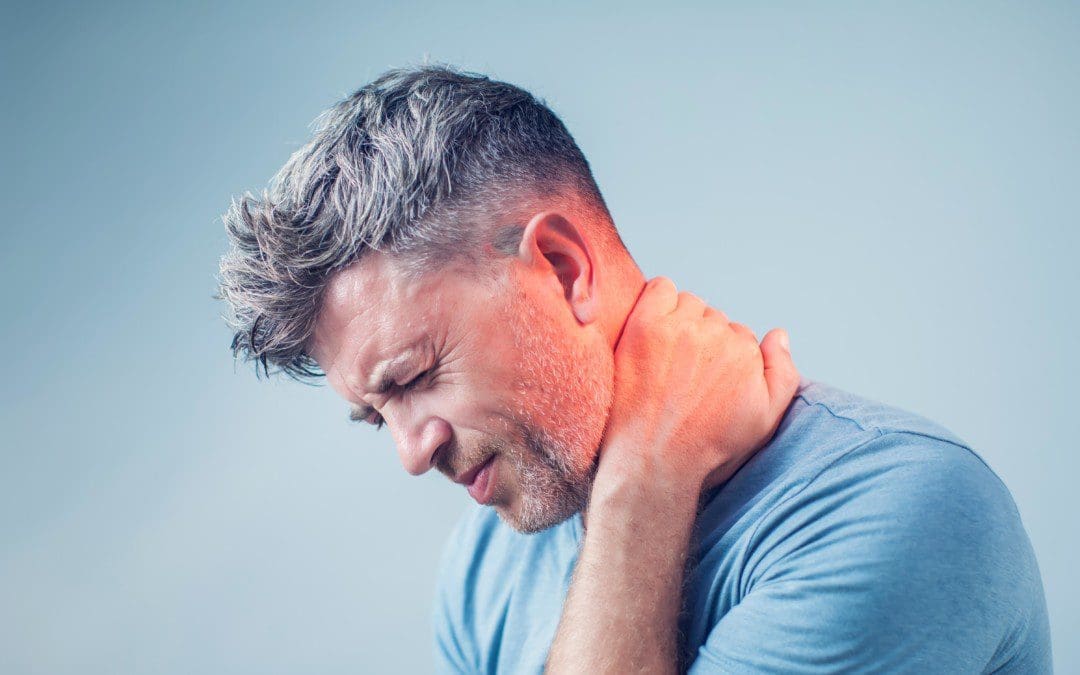Contents
Introduction
Neck injuries are more common than people realize and can lead to mobility issues, affecting the head and shoulders. This is caused by herniated or compressed cervical discs, which can irritate spinal nerve roots. Neck muscles can also be injured, resulting in shoulder pain, stiffness, or headaches. Neck pain is the second most common problem after back pain. Poor posture, phone usage, and computer work can all contribute to neck pain, which can worsen over time if left untreated. Fortunately, therapies are available to gently stretch affected muscles and realign cervical discs, providing relief. Our article discusses how neck pain affects the body, factors related to anterior cervical compression, and how spinal decompression can alleviate neck pain. We work with certified medical providers who use our patients’ valuable information to provide cervical disc treatments for individuals with neck pain affecting their cervical spine and causing mobility issues. We encourage patients to ask essential questions and seek education from our associated medical providers about their condition. Dr. Jimenez, D.C., provides this information as an educational service. Disclaimer
How Does Neck Pain Affect The Body?
Are you experiencing muscle stiffness between your neck and shoulders? Do you feel discomfort when working for long periods in a hunched position? Or are you suffering from persistent headaches that won’t go away? These symptoms could be caused by neck pain associated with anterior cervical disc compression, a common issue affecting many people. Neck pain is the second most common pain-related problem after low back pain, and it carries corresponding risk profiles that can lead to its development. Research studies revealed that cervical disc herniation associated with neck pain can affect the upper body extremities, ranging from mild to severe symptoms. The spine has three regions: cervical, thoracic, and lumbar, which protect the spinal cord that branches out the nerve roots, allowing mobility and flexibility for the head, neck, and shoulders. When the cervical discs become herniated, they can aggravate the nerve roots, leading to numerous symptoms that can affect the surrounding muscles in the neck and shoulders. Further research studies have revealed that when the cervical intervertebral discs are compressed, they become a common source of neck pain, usually accompanied by neck stiffness and other overlapping risk profiles that can cause referred pain to the upper body extremities. Therefore, neck pain associated with anterior cervical disc compression can become an issue when multiple environmental factors are involved.
Factors Associated With Anterior Cervical Compression To The Neck
Neck pain caused by anterior cervical compression can be due to numerous factors such as poor posture, degenerative disc disease (DDD), spinal stenosis, constantly looking down at a cell phone, being in a hunched or slouched position at work, and repetitive lifting of heavy objects. When individuals engage in repetitive motions that strain the neck, it can result in cervical compression that affects the nerve roots, causing abnormal neuron signals and shoulder or neck pain, according to research studies. This can also lead to overlapping risk profiles, causing referred pain to the upper extremities and somato-visceral pain. Additionally, anterior cervical compression can affect the cardiovascular system, resulting in unwanted symptoms like headaches and neck stiffness, causing significant discomfort.
Chiropractic Recovery Testimony-Video
Are you experiencing frequent headaches or stiffness between your shoulders and neck? Do you feel pain when stretching your neck from side to side? These symptoms may be related to anterior cervical compression in your cervical spine, which can cause herniation of the spinal disc and affect the nerve roots within muscle and tissue fibers. This can lead to referred pain in the neck and shoulder regions. Fortunately, there are various ways to alleviate pain and stiffness in the neck and treat chronic conditions associated with cervical disc herniation. Non-surgical treatments like chiropractic care can relieve neck and shoulder pain caused by cervical disc herniation. Combining non-surgical treatments with other therapies can prevent neck pain from recurring and improve posture. Chiropractic care can also alleviate referred pain caused by neck pain through manual and mechanical manipulation. Check out the video above for more information on non-surgical treatments for cervical disc herniation.
How Spinal Decompression Can Alleviate Neck Pain
Neck pain can be confusing because it can affect the shoulders and chest, leading to referred visceral-somatic pain. Fortunately, many treatments are available to alleviate neck pain and its associated symptoms. According to “The Ultimate Spinal Decompression” by Dr. Eric Kaplan, D.C., FIAMA, and Dr. Perry Bard, D.C., unwanted pressure on the cervical spinal disc can cause damage and ongoing pain by pressing the nerve root. If this happens, some people choose anterior cervical discectomy, which involves a small incision in the neck to remove the damaged disc and relieve pressure on the nerve root. Others opt for spinal decompression if the disc is herniated and aggravates the nerve root in the cervical spine region.
Studies have shown that spinal decompression can help ease neck and shoulder pain by gently stretching the spine through traction. This allows the herniated disc to be pulled back to its original position, relieving pressure on the affected nerve root and muscles. Spinal decompression is a safe and non-invasive treatment option that can be combined with other non-surgical therapies. It is also cost-effective and can benefit individuals who incorporate it into their health and wellness plans.
Conclusion
Neck pain is commonly caused by cervical disc herniation, leading to discomfort in the upper extremities around the neck. Repetitive motions associated with normal activities, such as poor posture, phone usage, and desk work, can also contribute to neck pain. Fortunately, non-surgical treatments like spinal decompression are available. This gentle technique uses traction to stretch the spine and alleviate pain from disc herniation, making it a cost-efficient option. By combining spinal decompression with other therapies, individuals can prevent the recurrence of neck pain and enjoy a pain-free life.
References
Kaplan, E., & Bard, P. (2023). The Ultimate Spinal Decompression. JETLAUNCH.
Disclaimer
General Disclaimer, Licenses and Board Certifications *
Professional Scope of Practice *
The information herein on "Anterior Cervical Disc Compression Relieved By Decompression" is not intended to replace a one-on-one relationship with a qualified health care professional or licensed physician and is not medical advice. We encourage you to make healthcare decisions based on your research and partnership with a qualified healthcare professional.
Blog Information & Scope Discussions
Welcome to El Paso's Premier Wellness and Injury Care Clinic & Wellness Blog, where Dr. Alex Jimenez, DC, FNP-C, a Multi-State board-certified Family Practice Nurse Practitioner (FNP-BC) and Chiropractor (DC), presents insights on how our multidisciplinary team is dedicated to holistic healing and personalized care. Our practice aligns with evidence-based treatment protocols inspired by integrative medicine principles, similar to those on this site and on our family practice-based chiromed.com site, focusing on naturally restoring health for patients of all ages.
Our areas of multidisciplinary practice include Wellness & Nutrition, Chronic Pain, Personal Injury, Auto Accident Care, Work Injuries, Back Injury, Low Back Pain, Neck Pain, Migraine Headaches, Sports Injuries, Severe Sciatica, Scoliosis, Complex Herniated Discs, Fibromyalgia, Chronic Pain, Complex Injuries, Stress Management, Functional Medicine Treatments, and in-scope care protocols.
Our information scope is multidisciplinary, focusing on musculoskeletal and physical medicine, wellness, contributing etiological viscerosomatic disturbances within clinical presentations, associated somato-visceral reflex clinical dynamics, subluxation complexes, sensitive health issues, and functional medicine articles, topics, and discussions.
We provide and present clinical collaboration with specialists from various disciplines. Each specialist is governed by their professional scope of practice and their jurisdiction of licensure. We use functional health & wellness protocols to treat and support care for musculoskeletal injuries or disorders.
Our videos, posts, topics, and insights address clinical matters and issues that are directly or indirectly related to our clinical scope of practice.
Our office has made a reasonable effort to provide supportive citations and has identified relevant research studies that support our posts. We provide copies of supporting research studies upon request to regulatory boards and the public.
We understand that we cover matters that require an additional explanation of how they may assist in a particular care plan or treatment protocol; therefore, to discuss the subject matter above further, please feel free to ask Dr. Alex Jimenez, DC, APRN, FNP-BC, or contact us at 915-850-0900.
We are here to help you and your family.
Blessings
Dr. Alex Jimenez DC, MSACP, APRN, FNP-BC*, CCST, IFMCP, CFMP, ATN
email: coach@elpasofunctionalmedicine.com
Multidisciplinary Licensing & Board Certifications:
Licensed as a Doctor of Chiropractic (DC) in Texas & New Mexico*
Texas DC License #: TX5807, Verified: TX5807
New Mexico DC License #: NM-DC2182, Verified: NM-DC2182
Multi-State Advanced Practice Registered Nurse (APRN*) in Texas & Multi-States
Multi-state Compact APRN License by Endorsement (42 States)
Texas APRN License #: 1191402, Verified: 1191402 *
Florida APRN License #: 11043890, Verified: APRN11043890 *
License Verification Link: Nursys License Verifier
* Prescriptive Authority Authorized
ANCC FNP-BC: Board Certified Nurse Practitioner*
Compact Status: Multi-State License: Authorized to Practice in 40 States*
Graduate with Honors: ICHS: MSN-FNP (Family Nurse Practitioner Program)
Degree Granted. Master's in Family Practice MSN Diploma (Cum Laude)
Dr. Alex Jimenez, DC, APRN, FNP-BC*, CFMP, IFMCP, ATN, CCST
My Digital Business Card
Licenses and Board Certifications:
DC: Doctor of Chiropractic
APRNP: Advanced Practice Registered Nurse
FNP-BC: Family Practice Specialization (Multi-State Board Certified)
RN: Registered Nurse (Multi-State Compact License)
CFMP: Certified Functional Medicine Provider
MSN-FNP: Master of Science in Family Practice Medicine
MSACP: Master of Science in Advanced Clinical Practice
IFMCP: Institute of Functional Medicine
CCST: Certified Chiropractic Spinal Trauma
ATN: Advanced Translational Neutrogenomics
Memberships & Associations:
TCA: Texas Chiropractic Association: Member ID: 104311
AANP: American Association of Nurse Practitioners: Member ID: 2198960
ANA: American Nurse Association: Member ID: 06458222 (District TX01)
TNA: Texas Nurse Association: Member ID: 06458222
NPI: 1205907805
| Primary Taxonomy | Selected Taxonomy | State | License Number |
|---|---|---|---|
| No | 111N00000X - Chiropractor | NM | DC2182 |
| Yes | 111N00000X - Chiropractor | TX | DC5807 |
| Yes | 363LF0000X - Nurse Practitioner - Family | TX | 1191402 |
| Yes | 363LF0000X - Nurse Practitioner - Family | FL | 11043890 |










